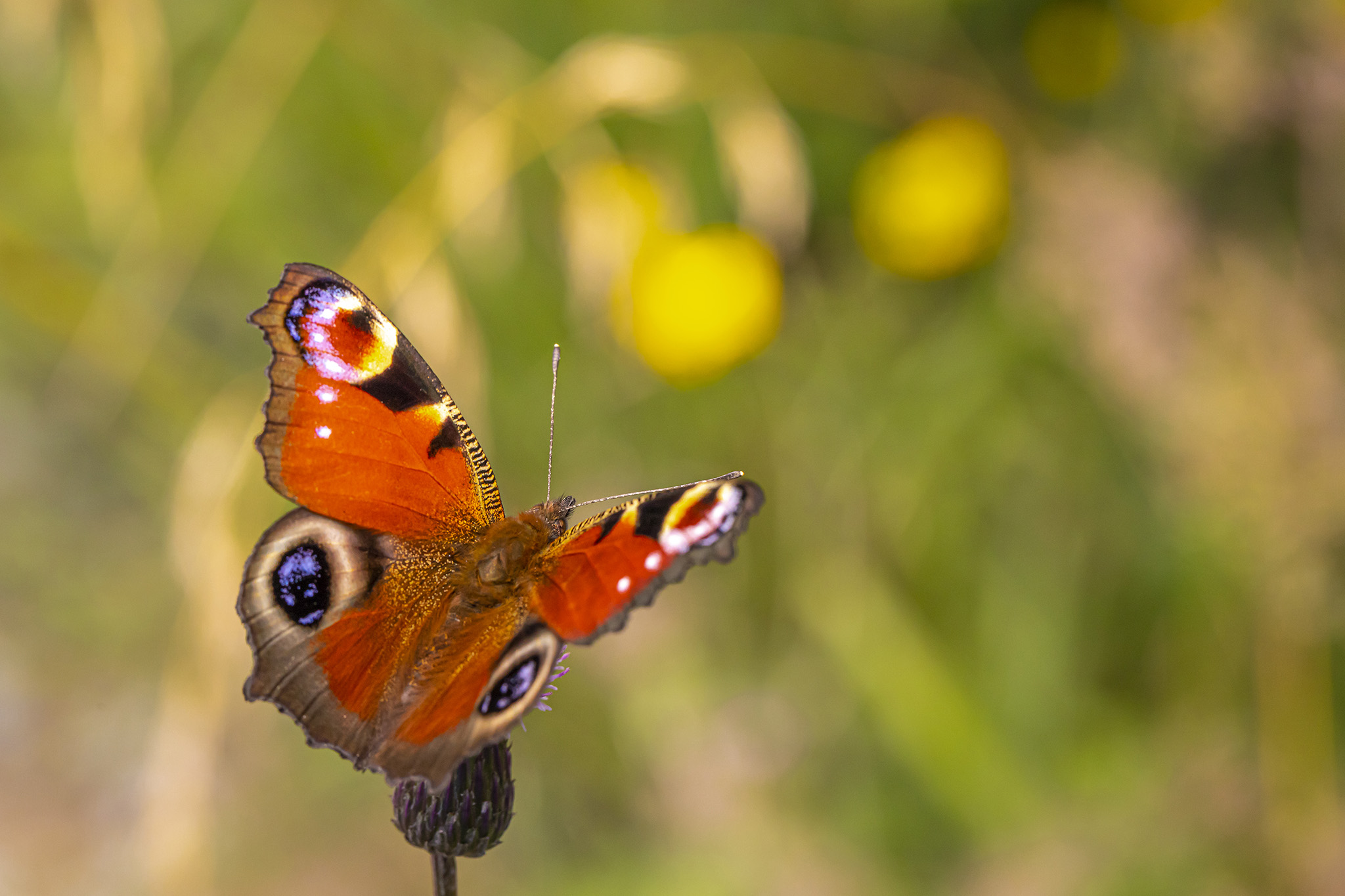🦋 European Peacock (Inachis io)
Also known simply as the Peacock butterfly, this striking species is one of Europe’s most recognizable and beloved butterflies — famous for its bold eyespots, vivid colors, and dramatic display when threatened.
🌈 Identification & Appearance
- Wingspan: 50–55 mm (2–2.2 inches)
- Upperwings:
- Bright reddish-orange base color
- Each wing features a large, iridescent eyespot (mimicking owl or cat eyes to deter predators)
- Underside:
- Dark brown to almost black — mimics a dead leaf, offering excellent camouflage when wings are closed
- Antennae: Long and clubbed
🌍 Distribution & Habitat
- Widespread across Europe, including the UK, and extends into temperate Asia as far as Japan
- Found in a wide range of habitats:
- Gardens
- Woodland edges
- Meadows and pastures
- Roadsides
- Parks and wastelands
🌱 Life Cycle & Host Plants
- Generations: Typically one brood per year, sometimes two in warmer regions
- Flight season:
- Mainly July–September (adults hibernate over winter and reappear in early spring)
- Host plants for caterpillars:
- Mainly stinging nettles (Urtica dioica)
- Eggs: Laid in clusters on the undersides of host plant leaves
- Caterpillars: Black with spines, often seen in large groups
🐛 Behavior & Adaptations
- Defense mechanisms:
- The eyespot display startles predators such as birds
- When resting, they close their wings to blend in with surroundings
- Capable of making a hissing or clicking sound when threatened (produced by rubbing wings)
- Hibernation: Adults hibernate in sheds, hollow trees, or dark crevices
- Nectar sources: Buddleia, thistles, dandelions, and various wildflowers
🛡️ Conservation Status
- IUCN Red List: Least Concern
- Populations are generally stable, though local declines can occur due to:
- Overuse of pesticides
- Loss of nettle-rich habitats
- Intensive agriculture
🌟 Interesting Facts
- The eyespots evolved as anti-predator adaptations—they can startle or mislead birds into attacking the wrong part of the body
- One of the first butterflies to appear in early spring, sometimes seen flying in February or March
- Unlike many butterflies, the Peacock overwinters as an adult rather than as a pupa or larva
🧭 Summary
The European Peacock (Inachis io) is a butterfly that’s impossible to miss — not just because of its flamboyant beauty, but also its resilience and adaptability. As a familiar sight in gardens and wild spaces across Europe, it serves as both a symbol of early spring and a reminder of the importance of native plants like nettles to support insect biodiversity.
Visited 795 times, 1 visit(s) today
Views: 1314
Subscribe to the newsletter:
